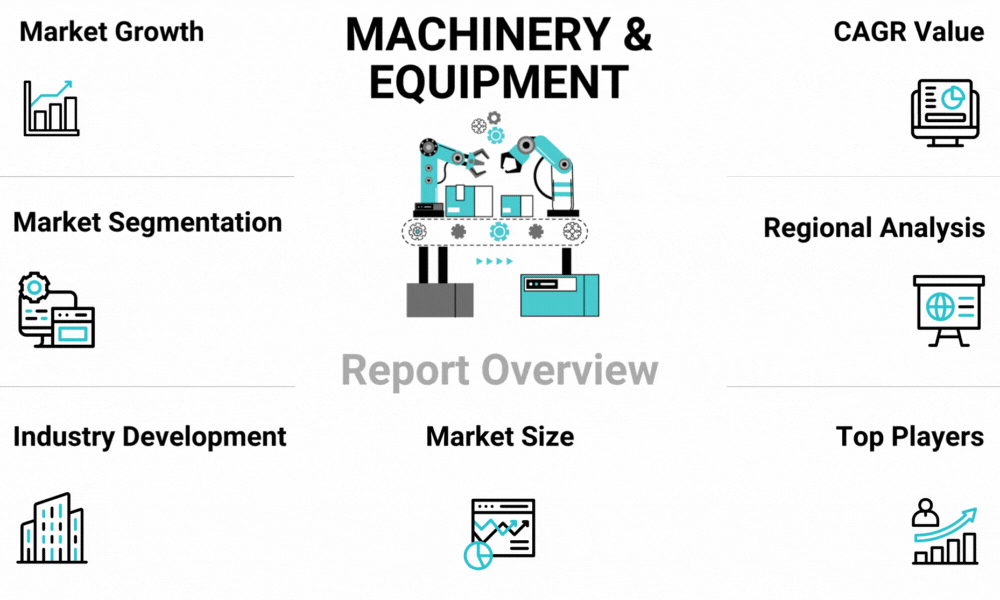Fraud Detection and Prevention Market Size, Growth Drivers, and Forecast 2024-2032
The study of the global Fraud Detection and Prevention Market Size 2024 in the report, which is a thoroughly researched presentation of the data. The analysis delves into some of the key facets of the global Fraud Detection and Prevention Market and shows how drivers like pricing, competition, market dynamics, regional growth, gross margin, and consumption will affect the market’s performance. A thorough analysis of the competitive landscape and in-depth company profiles of the top players in the Fraud Detection and Prevention Market are included in the study. It provides a summary of precise market data, including production, revenue, market value, volume, market share, and growth rate.
Fraud Detection and Prevention Market Statistics:
The global Fraud Detection and Prevention Market is expected to grow to over USD 255.39 billion by 2032,
The global Fraud Detection and Prevention Market was valued at USD 43.97 billion in 2023
CAGR: The global Fraud Detection and Prevention Market is expected to grow at a compound annual growth rate (CAGR) of 21.8% from 2024 to 2032.
The Fraud Detection and Prevention Market report majorly focuses on market trends, historical growth rates, technologies, and the changing investment structure. Additionally, the report shows the latest market insights, increasing growth opportunities, business strategies, and growth plans adopted by major players. Moreover, it contains an analysis of current market dynamics, future developments, and Porter’s Five Forces Analysis.
Major Trends in the Fraud Detection and Prevention Market
The Fraud Detection and Prevention market is evolving rapidly due to increasing cyber threats and the rising sophistication of fraudulent activities. One major trend is the adoption of advanced analytics and machine learning algorithms for fraud detection. Organizations are leveraging these technologies to analyze large volumes of transactional data in real-time, detect anomalous patterns, and identify potential fraud incidents with higher accuracy. This trend enables proactive monitoring and rapid response to emerging fraud threats, helping organizations mitigate financial losses and protect customer trust. Another key trend is the integration of AI-driven automation into fraud prevention systems, streamlining decision-making processes and reducing manual intervention in fraud investigations.
Furthermore, there is a growing demand for omnichannel fraud detection solutions that can monitor and protect transactions across multiple channels such as online, mobile, and in-store. With the proliferation of digital payment methods and e-commerce platforms, fraudsters exploit vulnerabilities in various channels to commit fraudulent activities. Omnichannel fraud detection solutions provide a holistic view of customer behavior and transaction patterns, enabling organizations to detect and prevent fraud more effectively across their entire ecosystem. Additionally, there is an increasing emphasis on real-time fraud prevention capabilities to address the evolving nature of fraud schemes. Organizations are investing in solutions that offer instantaneous fraud alerts and adaptive authentication methods to prevent unauthorized access and fraudulent transactions in real-time.
List of Top Companies in Fraud Detection and Prevention Market:
- IBM Corporation (U.S.)
- Uplexis (Brazil)
- Experian Information Solutions, Inc. (Brazil)
- Gemalto – Thales Group (France)
- ACI Worldwide, Inc. (U.S.)
- BAE Systems (U.K.)
- Fair Isaac Corporation (U.S.)
- Fidelity National Information Services, Inc. (U.S.)
- LexisNexis (U.S.)
- NICE Actimize Ltd. (Israel)
Factors Driving Demand in the Fraud Detection and Prevention Market
Several factors are driving the demand for advanced fraud detection and prevention solutions globally. Firstly, the financial services industry, including banks, payment processors, and fintech companies, faces escalating cyber threats and regulatory pressures to combat fraud. Fraud detection and prevention solutions help these organizations comply with regulations such as PSD2 (Payment Services Directive 2) and PCI DSS (Payment Card Industry Data Security Standard) while safeguarding customer data and minimizing fraud-related losses. Secondly, the rapid digitalization of businesses and the shift towards online and mobile transactions have expanded the attack surface for fraudsters, necessitating robust fraud prevention measures.
Moreover, the increasing sophistication of fraud tactics, including account takeover fraud, identity theft, and social engineering attacks, underscores the need for continuous innovation in fraud detection technologies. Organizations are investing in AI-powered fraud prevention solutions that can adapt to new threats and detect subtle patterns indicative of fraudulent behavior. Additionally, the COVID-19 pandemic has accelerated the adoption of digital channels for commerce and communication, creating new opportunities for fraudsters and heightening the urgency for effective fraud detection and prevention strategies. As organizations prioritize cybersecurity and consumer protection, the demand for scalable, agile, and AI-driven fraud detection and prevention solutions is expected to continue growing, shaping the future of fraud management globally.
Market Overview: A product/services overview and the size of the global Fraud Detection and Prevention Market are included. It provides a summary of the report’s segmental analysis. Here, the focus is on the product/service type, application, and regional . Revenue and sales market estimates are also included in this chapter.
Competition: This section includes information on market conditions and trends, analyzes manufacturers, and provides data on average prices paid by players, revenue and revenue shares of individual market players, sales and sales shares of individual players.
Company Profiles: This part of the research provides in-depth, analytical information on the financial and business strategy data of some of the top players in the global Fraud Detection and Prevention Market. This chapter of the report also covers a number of other specifics, such as product/service descriptions, portfolios, regional reach, and revenue splits.
Region-wise Sales Analysis: This portion of the study provides market data along with regional revenue, sales, and market share analysis. Additionally, it offers estimates for each examined regional market’s sales and sales growth rate, pricing scheme, revenue, and other factors.
North America (United States, Canada, and Mexico)
Europe (Germany, France, UK, Russia, and Italy)
Asia-Pacific (China, Japan, Korea, India, and Southeast Asia)
South America (Brazil, Argentina, Colombia, etc.)
The Middle East and Africa (Saudi Arabia, UAE, Egypt, Nigeria, and South Africa)
Customize this report as per your requirement
Market Segmentation:
The Market Segmentation section provides a detailed analysis of Fraud Detection and Prevention Market size detailing how the market is categorized based on various factors, enabling a more nuanced understanding of customer needs and preferences. This strategic approach helps businesses tailor their products, services, and marketing strategies to specific segments, optimizing overall market performance.
By offering a granular analysis of Fraud Detection and Prevention Market segmentation, this report equips stakeholders with the tools needed to make informed decisions, enhance customer satisfaction, and stay ahead of evolving market dynamics.
FAQ’s
Q.1. What are the primary drivers of the Fraud Detection and Prevention Market?
Q.2. What are the main factors propelling and impeding the growth of the Fraud Detection and Prevention Market?
Q.3. What are the general structure, risks, and opportunities of the market?
Q.4. How do the prices, revenue, and sales of the leading Fraud Detection and Prevention Market firms compare?
Q.5. What are the main segments of the market and how is it divided up?
Q.6. Which companies dominate the market, and what percentage of the market do they control?
Q.7. What trends are influencing the Fraud Detection and Prevention Market now and in the future?
why purchase research report from fortunebusinessinsights:
-
Comprehensive Data: These reports typically contain in-depth market analysis, including industry trends, market size, growth projections, and competitive landscape. This data is often gathered through extensive research and analysis, which can be time-consuming and difficult to compile independently.
-
Expert Analysis: Research reports usually include insights and analyses from industry experts. This expert perspective can provide a deeper understanding of the market, helping you make informed business decisions.
-
Time-Saving: Compiling the level of detailed information found in these reports would take a significant amount of time. Purchasing a report allows you to access the information quickly and efficiently.
-
Reliable Sources: Companies like Fortune Business Insights use reliable data sources and methodologies, ensuring that the information provided is accurate and trustworthy.
-
Strategic Planning: These reports can be crucial for strategic planning, helping businesses understand market opportunities, threats, and competitive strategies.
-
Investment Insights: For investors, these reports provide a clear understanding of market potential and risks, which is essential for making investment decisions.
Key Points from TOC:
1. Introduction
1.1. Research Scope
1.2. Market Segmentation
1.3. Research Methodology
1.4. Definitions and Assumptions
2. Executive Summary
3. Market Dynamics
3.1. Market Drivers
3.2. Market Restraints
3.3. Market Opportunities
4. Key Insights
4.1 Global Statistics — Key Countries
4.2 New Product Launches
4.3 Pipeline Analysis
4.4 Regulatory Scenario — Key Countries
4.5 Recent Industry Developments — Partnerships, Mergers & Acquisitions
5. Global Fraud Detection and Prevention Market Analysis, Insights and Forecast
5.1. Key Findings/ Summary
5.2. Market Analysis — By Product Type
5.3. Market Analysis — By Distribution Channel
5.4. Market Analysis — By Countries/Sub-regions
……………
11. Competitive Analysis
11.1. Key Industry Developments
11.2. Global Market Share Analysis
11.3. Competition Dashboard
11.4. Comparative Analysis — Major Players
12. Company Profiles
12.1 Overview
12.2 Products & Services
12.3 SWOT Analysis
12.4 Recent developments
12.5 Major Investments
12.6 Regional Market Size and Demand
13. Strategic Recommendations
TOC Continued……………….
To speak to our analyst for a discussion on the above findings, click Speak to Analyst
Related Report:
DRAM market Emerging Trends and Growth Projections 2032
Location-Based Services Market 2024 Size, Share, Trends, Technology, Challenges And Forecast By 2032
Natural Language Processing Market 2024 By Size, Share, Forecast And Trends Analysis Report 2033
Virtual Sensors Market Size, Product Trends, Key Drivers, Share Analysis And Forecast To 2032
Industrial Sensors Market Size, Share, and Trends Analysis 2024-2032


